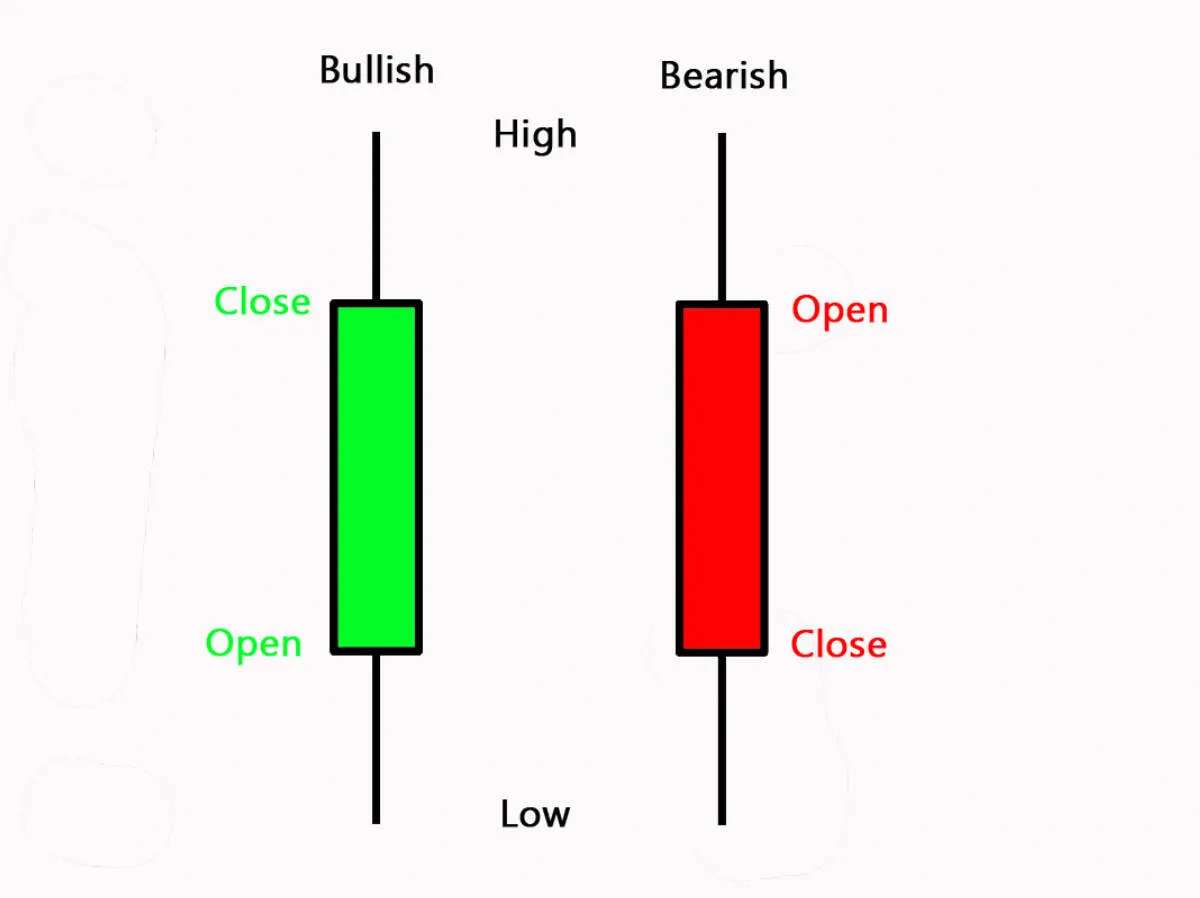Embark on a journey to grasp the fundamental principles of stock market investing and elevate your financial literacy. Unravel the complexities and key concepts that lay the foundation for successful investment endeavors.
What is the Stock Market?
In essence, the stock market is a platform where buyers and sellers come together to trade pieces of publicly traded companies – these pieces are known as stocks or shares. Imagine it as a giant auction house, but instead of paintings or antiques, you’re buying and selling ownership in businesses.
When you buy a share of stock, you’re essentially buying a tiny slice of ownership in that company. If the company performs well, its value increases, and your share in the company becomes more valuable. Conversely, if the company struggles, its value and the value of your shares may decline.
The stock market isn’t just one physical location. It’s a network of exchanges, both physical and electronic, where these transactions take place. Some of the most well-known exchanges include the New York Stock Exchange (NYSE), Nasdaq, and the London Stock Exchange.
How the Stock Market Works

The stock market might seem complex at first, but at its core, it operates on a simple principle: supply and demand. Think of it like an auction, where instead of paintings or rare artifacts, you’re buying and selling shares of publicly traded companies.
Buying and Selling Shares
When you buy a share of stock, you’re essentially buying a small piece of ownership in that company. Companies offer these shares to the public to raise capital for growth, expansion, research, or other business activities. This initial offering is called an Initial Public Offering (IPO).
Once a company is publicly traded, its shares are bought and sold on stock exchanges like the New York Stock Exchange (NYSE) or the Nasdaq. Investors, both individuals and institutions, place orders to buy or sell these shares. The price at which a stock trades is determined by the constant interplay of supply and demand:
- High Demand, Limited Supply: If more people want to buy a stock (high demand) than sell it (limited supply), the price of the stock goes up.
- Low Demand, High Supply: If more people want to sell a stock (high supply) than buy it (low demand), the price of the stock goes down.
Factors Influencing Stock Prices
Numerous factors can influence the supply and demand for a particular stock, thus affecting its price. These factors can include:
- Company Performance: A company’s earnings, profits, and overall financial health directly impact investor confidence and, consequently, its stock price.
- Industry Trends: Factors affecting a particular industry, such as technological advancements or regulatory changes, can influence the stock prices of companies within that industry.
- Economic Conditions: Broad economic factors, like interest rates, inflation, and economic growth, can influence overall market sentiment and impact stock prices.
- News and Events: Geopolitical events, natural disasters, or even company-specific news releases can create volatility and impact stock prices.
Types of Stocks
Navigating the stock market requires a basic understanding of the different types of stocks available to investors. Here’s a breakdown of the most common types:
1. Common Stock
This is the most prevalent type of stock. When people talk about “buying stock” in a company, they usually refer to common stock.
- Ownership: Represents ownership in a company.
- Voting Rights: Typically grants shareholders voting rights on company matters.
- Dividends: May pay dividends, but these are not guaranteed and depend on company profits.
- Risk: Generally considered riskier than bonds but offers higher potential returns.
2. Preferred Stock
A hybrid security that combines features of both stocks and bonds.
- Dividends: Typically pays a fixed dividend, offering a more predictable income stream.
- Claim on Assets: In case of bankruptcy, preferred stockholders have a higher claim on company assets than common stockholders.
- Voting Rights: Usually doesn’t come with voting rights.
- Risk: Generally less volatile than common stock but may offer lower potential returns.
Other Categories
a) Growth Stocks
These are stocks of companies expected to grow at an above-average rate. They typically reinvest profits back into the business rather than paying dividends.
b) Value Stocks
These stocks are considered undervalued by the market. Investors buy them hoping the price will eventually rise to reflect their true worth.
c) Blue-Chip Stocks
Stocks of large, well-established, and financially stable companies with a history of consistent earnings and dividend payments.
d) Small-Cap, Mid-Cap, Large-Cap Stocks
Categorized based on the company’s market capitalization (total value of outstanding shares).
How to Buy and Sell Stocks

Purchasing and selling stocks might seem daunting for beginners, but the process is relatively straightforward with the help of a brokerage account. Here’s a breakdown of the steps involved:
1. Choose a Brokerage Account
A brokerage account acts as an intermediary between you and the stock market. You’ll need to open an account with a reputable brokerage firm. When selecting a brokerage, consider factors such as trading fees, account minimums, research tools, and customer support.
2. Fund Your Account
Once you’ve opened your brokerage account, you’ll need to fund it to start buying stocks. You can typically fund your account through electronic transfers from your bank account or by sending a check.
3. Select the Stocks You Want to Buy
Research and choose stocks that align with your investment goals and risk tolerance. Consider factors such as company performance, industry trends, and market conditions.
4. Place Your Order
Once you’ve identified the stocks you want to purchase, you’ll need to place an order through your brokerage’s online platform or mobile app. When placing your order, you’ll need to specify:
- Ticker symbol: The unique code that identifies a particular stock.
- Number of shares: The quantity of stock you wish to buy.
- Order type: Common order types include market orders (buy or sell at the current market price) and limit orders (buy or sell at a specific price or better).
5. Monitor Your Investments
After buying stocks, it’s crucial to monitor their performance regularly. Track how your investments are doing and make adjustments to your portfolio if necessary to align with your investment strategy.
6. Sell Your Stocks
When you’re ready to sell your stocks, you’ll follow a similar process to buying. You’ll place a sell order through your brokerage account, specifying the ticker symbol, the number of shares you want to sell, and the order type. Once your order is executed, the proceeds from the sale will be credited to your brokerage account.
Stock Market Terminology
Navigating the stock market requires a grasp of its unique language. Here are some key terms to understand:
Basic Terms:
- Stock: A share of ownership in a publicly traded company.
- Shares: Individual units of stock.
- Stock Exchange: A marketplace where buyers and sellers trade stocks (e.g., New York Stock Exchange, Nasdaq).
- Ticker Symbol: A unique code that identifies a particular stock (e.g., AAPL for Apple Inc.).
- Portfolio: A collection of investments owned by an individual or entity.
Buying and Selling:
- Market Order: An order to buy or sell a stock at the best available price immediately.
- Limit Order: An order to buy or sell a stock only at a specific price or better.
- Bid Price: The highest price a buyer is willing to pay for a stock.
- Ask Price: The lowest price a seller is willing to accept for a stock.
- Volume: The number of shares of a stock traded during a particular period.
Financial Indicators:
- Dividend: A portion of a company’s profits distributed to shareholders.
- Earnings per Share (EPS): A company’s profit divided by the number of outstanding shares, indicating profitability.
- Price-to-Earnings Ratio (P/E Ratio): A valuation ratio calculated by dividing the stock price by EPS.
- Market Capitalization: The total value of a company’s outstanding shares, calculated by multiplying the share price by the number of shares.
Risks and Rewards of Investing

Investing in the stock market, like any investment, involves inherent risks and potential rewards. Understanding these risks and rewards is crucial for making informed investment decisions.
Risks:
Investing in the stock market carries the risk of losing money. The value of stocks can fluctuate significantly, and there is no guarantee that you will earn a profit.
- Market Risk: This refers to the broader market’s fluctuations, which can be influenced by economic factors, geopolitical events, and investor sentiment. Market downturns can lead to losses on your investments.
- Company-Specific Risk: This pertains to risks associated with individual companies you invest in, such as poor management decisions, competition, or industry disruptions. A company’s performance directly impacts its stock price.
- Inflation Risk: Inflation erodes the purchasing power of money over time. If your investments don’t grow at a rate higher than inflation, your returns will be diminished.
- Liquidity Risk: Some stocks are less liquid than others, meaning it may be difficult to sell your shares quickly without impacting the price. This can be a concern in times of market volatility.
Rewards:
Despite the risks, investing in the stock market offers the potential for significant rewards:
- Potential for High Returns: Historically, stocks have generated higher returns compared to other asset classes like bonds or cash over the long term.
- Dividend Income: Some companies distribute a portion of their profits to shareholders as dividends, providing a stream of passive income.
- Growth and Compounding: Investing in growing companies can lead to capital appreciation as their earnings and stock prices increase. Compounding allows your returns to generate further returns over time.
Diversifying Your Investments
Diversification is a key principle in investing. It’s often described as “not putting all your eggs in one basket.” In investing, diversification means spreading your money across different asset classes, sectors, and geographical regions. Here’s why it’s crucial:
Reducing Risk
Different investments perform differently under various market conditions. When you diversify, you reduce the impact of a single investment performing poorly on your overall portfolio. For instance, if one stock in your portfolio takes a hit, the losses can be offset by gains in other stocks or asset classes.
Managing Volatility
Diversification helps to smooth out the ups and downs of the market. A well-diversified portfolio is less likely to experience dramatic swings in value, offering a more predictable investment experience.
Capturing Growth Opportunities
By investing in a range of assets, you increase your chances of benefiting from growth in different sectors and economies. You’ll be positioned to capitalize on opportunities as they arise across various markets.
How to Diversify
- Asset Allocation: Decide on the percentage of your portfolio you want to dedicate to different asset classes like stocks, bonds, and real estate.
- Sector Diversification: Invest in companies across different sectors such as technology, healthcare, and consumer goods.
- Geographic Diversification: Consider including international stocks in your portfolio to benefit from global growth.
Tips for New Investors

Stepping into the world of stock market investing can feel like navigating uncharted territory. Here are some essential tips tailored specifically for beginners:
1. Start with Education
Before investing a single dollar, invest your time in understanding the basics of the stock market. Learn about different investment vehicles (stocks, bonds, mutual funds), market terminology, and basic investment strategies. There are numerous online resources, books, and even courses available to get you started.
2. Define Your Investment Goals
What are you hoping to achieve through investing? Are you saving for retirement, a down payment on a house, or your child’s education? Clearly defining your investment goals will help shape your investment strategy, risk tolerance, and time horizon.
3. Begin with a Long-Term Mindset
The stock market is prone to short-term fluctuations. Don’t get caught up in the hype of quick profits or panic during market dips. Successful investing is a marathon, not a sprint. Adopt a long-term perspective and focus on the potential for long-term growth.
4. Diversify Your Portfolio
Don’t put all your eggs in one basket. Diversification involves spreading your investments across different asset classes (stocks, bonds, real estate), sectors (technology, healthcare, energy), and geographic regions. This helps mitigate risk by ensuring that if one investment performs poorly, others can cushion the impact.
5. Start Small and Gradually Increase
You don’t need a fortune to start investing. Begin with a smaller amount that you’re comfortable with and gradually increase your contributions over time. As your knowledge and confidence grow, so too can your investment portfolio.
6. Consider Index Funds or ETFs
For new investors, index funds and Exchange-Traded Funds (ETFs) can be a great way to gain broad market exposure with lower risk. These funds track a specific market index, like the S&P 500, providing instant diversification.
7. Manage Your Emotions
Investing can be an emotional rollercoaster. It’s important to separate your emotions from your investment decisions. Avoid making impulsive trades based on fear or greed. Stick to your investment plan and make rational, well-informed choices.
8. Seek Professional Advice When Needed
If you’re feeling overwhelmed or unsure about certain investment decisions, don’t hesitate to consult with a financial advisor. They can provide personalized guidance based on your financial situation, risk tolerance, and investment goals.
Conclusion
In conclusion, grasping the fundamentals of stock market investing is crucial for building a successful investment portfolio. By understanding key concepts such as risk tolerance, diversification, and market analysis, investors can make informed decisions to achieve their financial goals.

